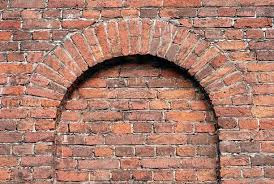Archways, with their graceful curves and timeless appeal, have been an integral part of architectural design for centuries. These structural elements not only serve functional purposes such as providing support and stability but also add a touch of elegance and sophistication to buildings. In this article, we will explore various types of archways, each showcasing a unique design that has influenced architecture across different cultures and time periods.
Round Arch:
The round arch is one of the most classic and recognizable arch types. Characterized by a perfect semi-circle shape, it has been used since ancient times, prominently seen in Roman architecture. Round arches known for their stability and even distribution of weight, making them a popular choice in the construction of bridges, aqueducts, and monumental structures like the Colosseum.
Gothic Pointed Arch:
The Gothic pointed arch, prevalent in Gothic architecture, features a pointed apex. This archetype became prominent during the medieval period and is often associated with cathedrals and churches. The pointed arch not only adds a vertical emphasis to structures but also allows for greater height and a sense of upward movement, contributing to the grandeur of Gothic buildings.
Moorish Horseshoe Arch:
Originating from Islamic architecture, the Moorish horseshoe arch is characterized by its rounded top with slightly pointed ends, resembling an inverted horseshoe. This arch type is commonly found in mosques, palaces, and other Islamic structures, showcasing intricate geometric patterns and decorative elements.
Romanesque Arch:
The Romanesque arch is prevalent in Romanesque architecture. Is semi-circular like the round arch but tends to be less rounded. It is often characterized by a sturdier appearance and is typically found in churches and fortifications from the Romanesque period. The simplicity of the Romanesque arch reflects the architectural style of the time.
Tudor Arch:
The Tudor arch, popular during the Tudor period in England, is a wide, shallow arch with a flattened apex. It often seen in the doorways and windows of Tudor-style buildings. The Tudor arch contributes to the distinctive and charming character of Tudor architecture, blending medieval and Renaissance influences.
Ogee Arch:
The ogee arch features an S-shaped curve and is known for its graceful and flowing lines. This arch type commonly seen in Gothic and Islamic architecture, adding a sense of fluidity and elegance to structures. The ogee arch frequently use in doorways, windows, and decorative elements.
Segmental Arch:
The segmental arch is a low, wide arch that resembles a segment of a circle. It often used in architectural designs where a flatter arch desired, such as over doors and windows. The segmental arch provides a more subtle and understated aesthetic compared to more pronounced arch types.
Parabolic Arch:
The parabolic arch characteriz by a curve that follows a parabolic trajectory. This arch type is commonly use in modern architecture and engineering. Especially in the design of bridges and structures that require a specific distribution of forces. The parabolic arch combines functionality with a sleek and contemporary appearance.
Conclusion:
Archways, in their various forms, have played a central role in shaping architectural styles and designs throughout history. From the grandeur of Gothic cathedrals to the simplicity of Romanesque structures, each arch type contributes to the visual language of buildings. Reflecting the cultural, artistic, and engineering preferences of their time. As architects continue to draw inspiration from the past while pushing the boundaries of innovation, the diverse types of archways will likely continue to evolve, leaving an indelible mark on the built environment.

